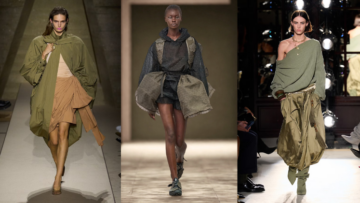
As it struggles with the effects of a weak currency and US tariffs on consumer spending, Inditex, the owner of Zara, announced a better start to its autumn sales on Wednesday.
After growing 5.1% in the first half, sales from 1 August to 8 September increased 9% in currency-adjusted terms compared to the same period last year. Early trading saw a 6% increase in Inditex shares, which have declined this year.
After revenues for the second quarter ended 31 July came in at US $ 11.81 billion, less than the US $ 12.02 billion experts had predicted, according to an LSEG estimate, the third quarter got off to a better start.
Inditex stated that currency fluctuations would reduce sales by 4% in 2025, more than the 3% impact it had initially projected and that a weaker US dollar was partially to blame. Sales in the United States, Inditex’s second-largest market by revenue after Spain, are worth less in euros due to a declining value of the currency.
Kutxabank Investment analyst Sara Herrando Deprit said that even without the currency impact, sales growth had been slightly worse than expected. However, she added that the second half of the year would be key for Inditex, making the stronger start to autumn a positive sign.
Chief executive Oscar Garcia Maceiras described the first-half performance as strong despite the “complex market environment.”
Primark highlighted the difficulty for apparel retailers in persuading customers to spend money, stating on Wednesday that it expects the consumer environment to remain unstable.
With a gross profit of US $ 12.53 billion, Inditex maintained its gross margin for the first half at 58.3%, the same level as the previous year, despite the currency impact.
Jefferies analysts noted that a largely unchanged gross margin underscored the group’s ability to trade through a difficult Spring/Summer season across Europe.
Many garment and shoe companies that source from factories in Asia have raised their prices in an attempt to offset higher costs resulting from US President Donald Trump’s increased tariffs on imports from a wide range of key trading partners.
Since the beginning of this year, Inditex’s stock has dropped as investors adjust to a slowdown following four years of double-digit annual sales growth.
Zara’s ability to raise prices in the United States to preserve its margins, as well as the strength of demand for its goods, has been called into question by the slowing sales growth.
According to estimates from Euromonitor, the Spanish company – which also owns Pull & Bear, Massimo Dutti, Bershka, Stradivarius and Oysho – has steadily increased its market position in the global fashion industry since the Covid pandemic, while Swedish rival H&M has struggled to expand.
Inditex’s success is largely attributed by investors to its supply chain, which allows it to quickly introduce new, on-trend clothing into stores. The company plans to invest US $ 2.11 billion into its logistics over 2024 and 2025.






